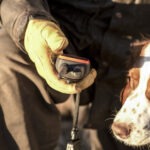Can Dogs Eat Fava Beans
Fava Beans and Dogs: A Comprehensive Guide to Their Compatibility
Dogs are known for their love of food, especially when it comes to human food. As a dog owner, you may have wondered if your furry friend can eat fava beans, also known as broad beans or faba beans. Fava beans are a type of legume that are rich in protein, fiber, vitamins, and minerals. They are often used in Mediterranean and Middle Eastern cuisine, but are they safe and healthy for dogs to eat? In this article, we will explore the benefits and risks of feeding fava beans to dogs, and provide some tips on how to do it properly.
Part 1: Benefits of Fava Beans for Dogs
Fava beans are packed with nutrients that can contribute to a dog’s health and well-being. Here are some potential benefits of including fava beans in a dog’s diet:
– Protein: Fava beans contain about 12 grams of protein per 100 grams of serving, which is higher than most vegetables. Protein is essential for building and repairing muscles, tissues, and organs in dogs.
– Fiber: Fava beans are high in fiber, which can aid digestion, regulate bowel movements, and prevent constipation in dogs. Fiber also helps dogs feel full longer, which can reduce overeating and obesity.
– Vitamins: Fava beans are a good source of vitamin C, folate, thiamin, riboflavin, niacin, and vitamin K. These vitamins support immune function, energy metabolism, blood clotting, and bone health in dogs.
– Minerals: Fava beans contain iron, magnesium, potassium, phosphorus, copper, zinc, and manganese. These minerals play various roles in maintaining proper body functions such as oxygen transport, nerve signaling, muscle contraction, and enzyme activity.
Part 2: Risks of Fava Beans for Dogs
While fava beans have many potential benefits for dogs, there are also some risks and drawbacks to consider. Here are some possible issues with feeding fava beans to dogs:
– Flatulence: Fava beans contain oligosaccharides, a type of carbohydrate that can cause gas and bloating in dogs (and humans). Excessive flatulence can be uncomfortable and embarrassing for both you and your dog.
– Allergies: Some dogs may be allergic to fava beans or other legumes. Signs of an allergic reaction may include itching, hives, swelling, vomiting, diarrhea, and difficulty breathing. If your dog has never eaten fava beans before, introduce them gradually and watch for any adverse reactions.
– Gastrointestinal upset: Fava beans are high in fiber and complex carbohydrates that may not be easily digested by some dogs. Eating too many fava beans at once or too often may lead to diarrhea, constipation, or other digestive problems. Always monitor your dog’s stools and adjust the amount of fava beans accordingly.
– Interference with medication: Fava beans contain a substance called L-dopa, which is used to treat Parkinson’s disease in humans. Dogs who take certain medications for seizures or anxiety may experience adverse effects if they consume too much L-dopa from fava beans. Consult your veterinarian before giving your dog fava beans if they are on any medication.
Part 3: How to Feed Fava Beans to Dogs
If you decide to feed fava beans to your dog, here are some tips on how to do it safely and deliciously:
– Choose fresh, ripe fava beans without any signs of damage or mold. Avoid canned or processed fava beans that may contain salt, preservatives, or other additives that can harm dogs.
– Cook the fava beans thoroughly by boiling or steaming them until tender. Raw or undercooked fava beans can be hard to digest and may contain harmful compounds such as lectins, phytic acid, or vicine/convicine.
– Remove the outer skin of the fava beans before feeding them to your dog. The skin can be tough and indigestible for dogs, and may also contain more oligosaccharides than the inner bean.
– Serve the fava beans as a treat or a supplement, not a main meal. Too much fava beans can upset a dog’s stomach or unbalance their diet. A small handful of fava beans once in a while is fine for most dogs, but consult your veterinarian if you have any doubts.
– Mix the fava beans with other dog-friendly foods such as cooked rice, vegetables, fruits, eggs, or meat. This can enhance the flavor and nutrition of the fava beans and provide a balanced meal for your dog.
Part 4: Conclusion
In conclusion, dogs can eat fava beans in moderation as long as they are cooked, peeled, and introduced gradually into their diet. Fava beans offer many potential benefits such as protein, fiber, vitamins, and minerals that can support a dog’s health and vitality. However, there are also some risks and drawbacks to consider such as flatulence, allergies, gastrointestinal upset, and interference with medication. Always consult your veterinarian before giving your dog any new food or supplement, including fava beans. With proper preparation and portion control, you and your dog can enjoy the deliciousness and nutritional value of fava beans together!



